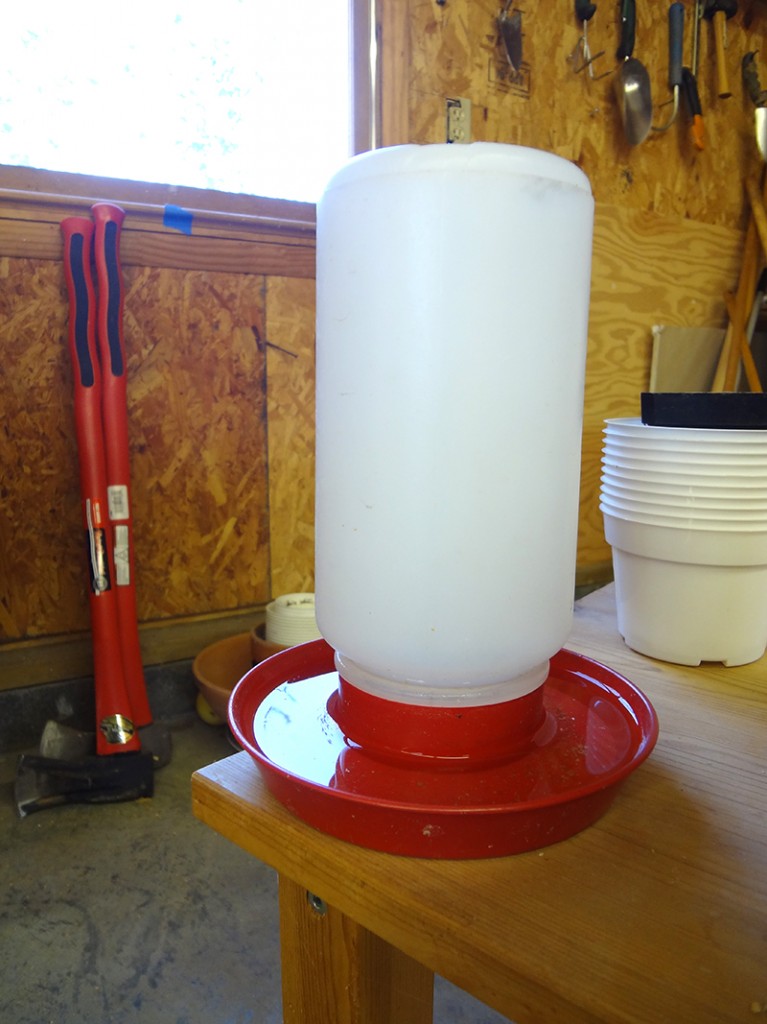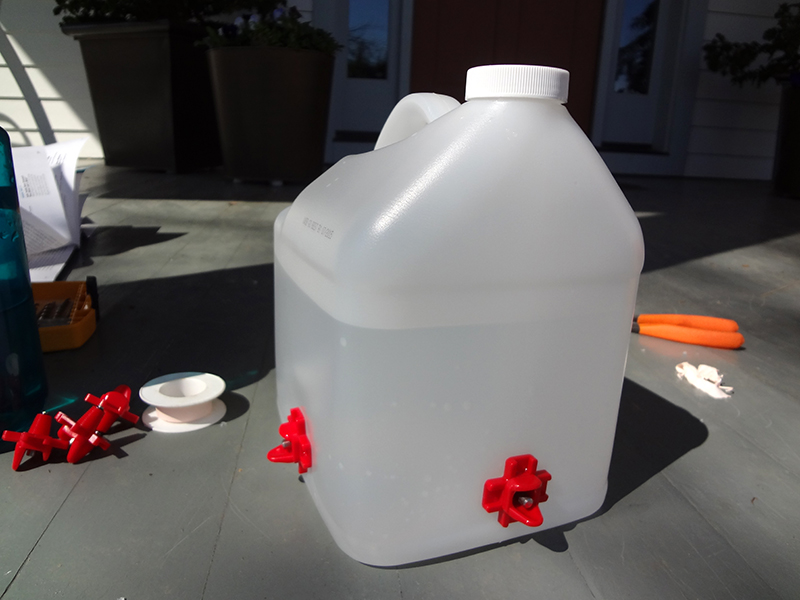Having a broody hen hatch and raise chicks is far easier, to me, than worrying about fluctuating incubator conditions or heat lamps. However, now that I’ve worked with a broody hen a few times, I realize that using a broody raises some specific issues that are easily addressed with a little bit of construction. I hope that publishing my trial-and-error process will save you time and mess and maybe even the lives of your chicks.
A full-size hen in a small broody coop can be like a bull in a china shop. Certain hens are more gentle than others, but the one I am working with now is a real bruiser. She is just acting out a chicken’s nature, which is to scratch and peck everything in sight. But when everything in sight is a newspaper-lined coop, open food dishes, and a top-heavy chick waterer, not to mention eight delicate little chicks, we have problems. The instant I filled the food bowl with chick feed, the hen would scratch it out to fall through the wire cage floor onto the tray below, wasting pounds of food a day, starving her growing chicks, and sometimes flipping the entire heavy, ceramic feed bowl into their heads. Then she’d continue scratching, ripping up the newspapers that lined the coop’s wire floor, which I used to give the chicks a solid, warm flooring to protect them from drafts. And then she’d knock over the waterer, which was usually filled with food, poop, and wet newspaper, draining the water into the spilled food.
I tried all sorts of tricks—tying the waterer in place, using various dishes and pieces of cardboard under the food bowl, but the whole system was a mess despite cleaning three times a day. Disgusting living conditions aside, the final straw was the fatal implication of a tipped-over waterer. Birds as tiny as these chicks can only go for a couple of hours without water before they’ll die.
A lot of internet research revealed that poultry keepers usually have great success with “nipple waterers,” which are used in commercial poultry production. An evening spent typing “chicken nipple” into various Web sites (what will Google think?!) revealed options such as this, which were supposed to be relatively easy to install on the bottom of a bucket:
However, I had a hard time imagining filling the waterer with the valves installed on its bottom, not being able to set it down. What a pain! I thought there had to be a better solution. After more searching, I discovered the much-less-common “horizontal nipple” and ordered a few from an eBay seller. According to this article in Mother Earth News, this new style of nipple was just introduced a few months ago. Instead of being installed on the bottom of the water container, these go on the side. They are spring-loaded and have a little drip cup underneath to catch the water and help the chickens drink.
My new nipples arrived yesterday and I began to build my improved chicken waterer. 
I used a gallon aloe vera juice container because its squared off shape fit more easily in the coop, and I thought I had a better chance of a good seal between the nipple and the container if the container walls weren’t curved. I drilled a couple of 3/8″ holes in the container. I considered installing the nipples with silicone sealant, which would surely eliminate leaks, but I wanted to be able to reuse these nipples on another container. So I wrapped the threads with plumber’s tape in hope that it would improve my odds of a leak-proof seal.
My first attempt yielded one leaky nipple, so I took it out and saw that some bits of container plastic in the drill hole were impeding a tight seal. I cleaned up the edges of the hole, rewrapped the nipple threads, and put it in again. When it seemed like it had a good seal, in that the nipples were very hard to turn as they got further into the container, I filled the container with water and let it sit on the porch all afternoon, watching for leaks. When I saw none, it was time to introduce the birds to their new drinking fountain.
Up next: teaching the chickens to use the new waterer and fixing the food dish problem.




Oh, this is exactly what I need!
I’ve been experimenting with different ways of watering the chicks. Small waterers, floor waterers, and hanging waterers. I was going to get that underside water nipple tomorrow.
I’m glad I checked your blog tonight. Tomorrow, I’m going to order the horizontal ones and put them on a big plastic jug.
Thank you!!!
Dani
Oh, I almost forgot…. this is the feeder I made to combat the wild things birds like to do in their food!
https://www.flickr.com/photos/thingsifoundtoday/13682052544
(i hope the link works)
Dani